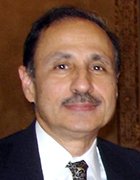How cloud is changing the role of the CIO today
Cloud has had a colossal impact on IT -- for starters, it's changed how it works and what it can pull off. And its effect on the role of the CIO today is no less transformational.
Dirk Hermans' biggest challenge is serving a business department with "an insatiable appetite for new products and features."
His tool for tackling that challenge: cloud computing.
"The expectations that business has for the IT delivery organization are huge," Hermans said. He's vice president of research and development at Voxbone, a provider of communications as a service in Brussels, Belgium. "And the reason why they have this huge expectation is that they can see what's possible out there -- and they see a lot of new, emerging companies and cloud providers that can deliver a whole lot of value."
Voxbone doesn't call one person CIO: Hermans and the COO codirect IT operations. That's part of his job. The other part is to design and develop the company's core services, which include internet-based telephony and videoconferencing. The business-oriented side rises from the changing role of the CIO today from responder to business demands to driver of business innovation. Hastening this transition, Hermans and other IT chiefs said, is Cloud computing, which removes much of the provisioning and managing that IT departments have traditionally been responsible for and frees up IT to enable business initiatives.
 Dirk Hermans
Dirk Hermans
"A lot of stuff we've actually moved out of our core IT teams because the talent that the core IT teams have is much better spent on something that requires really intimate knowledge of the business," Hermans said.
Voxbone relies on a combination of public cloud infrastructure providers, cloud applications and a private cloud built on OpenStack's open source technology. Running its business on the cloud gives the company a ready-made way to structure its own services to customers, with APIs and a multi-tenant architecture, for example.
'Who's your customer?'
 Bobby Cameron
Bobby Cameron
Forrester Research analyst Bobby Cameron said the term business service provider does a reasonable job of describing the role of the CIO today -- a leader who enables the business with the services it needs to run. The most mature companies, which Cameron defined as those that operate as "a platform for value delivery," have adopted cloud as their primary computing environment because it allows them to focus on the business.
He recalled interviews he conducted with CIOs for a recent Forrester survey.
"When we asked leading-edge CIOs, 'Who's your customer?' they mentioned the external customer," Cameron said. "When we asked the trailing edge, the Luddites, who their customer is, they say it's the internal user. And that's a piece of this shift."
Recent research puts some numbers to the transition of the CIO's role. IDG's "2018 State of the CIO" survey found that 71% meet directly with external customers, and 58% expect to have more interaction with customers over the next year. An overwhelming majority, 88%, see the CIO's role as becoming more focused on digital technologies and innovation.
 Sonny Segal
Sonny Segal
Sonny Segal is among that majority. The CIO for the government of Montgomery County in Maryland, just north of Washington, D.C., has seen his role change significantly over his nearly six years on the job, and today he's called on to address larger initiatives. For example, he consults with the Montgomery County Economic Development Corp. to select businesses the county government can partner with. He weighs in on literacy initiatives and a technology program for elders. He works with the local community college, Montgomery College, on its cybersecurity research program, and he's now required to attend meetings of a business advisory group made up of the county's corporate leaders.
"I've been in the technology business for a while -- I've seen the difference in this visibility that the CIOs now have and the responsibility we carry," Segal said.
Cloud effect on role of the CIO today
Meanwhile, cloud computing has exploded in popularity. A 2017 Forrester report found that 48% of IT leaders who make infrastructure decisions were using cloud platforms from five or more different public cloud vendors. The reasons for managing multiple clouds were to have alternative choices to recover data in case of a disaster or a cloud provider outage, say -- "That's a pretty logical one," Cameron said -- to get better performance for certain workloads or to take advantage of a business application or service that's on one vendor but not on another.
"So, the idea is the business problems are driving," Cameron said. CIOs who get that also get that cloud is the best vehicle in which to speed to business value. That's because not only does it have the computational vroom to power business initiatives, but also there's no need to keep an eye on the gears -- or in Cameron's words, "all the pieces in the technology stack in the cloud." The provider does that.
"To some extent, it helps you narrow it down to core competencies," said Tony Arcadi, associate CIO for enterprise infrastructure at the U.S. Department of the Treasury. The federal government has a cloud-first policy, which means cloud needs to be considered for all new IT initiatives.

When a CIO is running a traditional data center, "you're managing your space facilities. Do I have elasticity in my space? If I've got to scale up, do I need more data center space? You're managing cooling. This is not IT," Arcadi said. "It's a distraction from core competency that you're effectively outsourcing; you're not caring about that anymore. I don't care whether the cloud is cooled properly or not -- I mean, I do from a results perspective, but it's not a calculation for me."
Benefits of cloud in Maryland
At the Montgomery County government, which Segal has been equipping with a public-private hybrid cloud and an assortment of SaaS applications, cloud has indeed removed time-consuming tasks such as provisioning servers -- supplying them with sufficient processing power, memory and storage.
Now, the county's IT department can "administer the servers without having several people allocated to doing those kinds of things."
Cloud computing has also helped Segal make the government work more efficiently. For example, by using Microsoft's SharePoint Online, along with Office 365 and file-hosting service OneDrive, county employees can collaborate on projects and "perform so much more efficiently than previously was imaginable."
Segal's current project is deploying unified communication as a service -- telephones, messaging and video conferencing delivered through the cloud. It means physical phones can go -- a single phone number will follow employees wherever they go, and they can answer on a mobile device. He's now piloting cloud communications software BroadSoft and Microsoft's Skype for Business in the IT department. When complete, the project will replace the county's 12,000 phone extensions -- and save a lot of money on bills. It's not without risk, though, so Segal is investing in rearchitecting the county's systems so that they are always available.
"We could not possibly take telephony to the cloud and then have the system go down on us or lose connection to the cloud," Segal said. "But this is a risk I can take as CIO because of the cloud. Because those services are highly reliable; the tools are proven."
Waste not on public cloud
 Hubert Barkley
Hubert Barkley
At Waste Industries, a trash and recycling collection company in Raleigh, N.C., Hubert Barkley has embraced the transformed role of the CIO today with gusto. His title is vice president of information and technology, not CIO, but "there's nobody above me in technology." He uses the words valued business partner to describe his relationship with the rest of the company: His job is to understand the wants and needs of the business and then use technology to improve business processes and customer services.
For example, Barkley has outfitted the company's fleet of garbage trucks with sensors that collect information about where the trucks are, what they're doing and how well they're performing. He uses predictive analytics to determine when to replace a vehicle and Geospatial analysis to figure out which areas have the most potential business -- information that's then handed over to sales.
Barkley oversees a lot of physical IT infrastructure, so moving to public cloud infrastructure such as Microsoft Azure or Amazon Web Services doesn't make sense. But the benefit of letting a cloud provider worry about the nuts and bolts of IT jibes with Barkley's business-enabling aims.
"I'm pro-cloud. If I didn't have the investment in the equipment that I had today, I would probably be there," he said. "But I've got to stick with what I have for now until the life runs out. And it works for me."
CIO's role: Serving business users
Barkley does rely on a private cloud in a colocation facility. Along with copy data management software Actifio, which stores data in one master copy and maintains changes to it, he's able to get important information for business users in minutes.
That's "absolutely a huge win for us," he said. In the past, data was stored on tape off site, and retrieving data could take a day or two. Now, if the legal department, say, wants data from two years ago, he's on it. And his reputation as business-focused CIO is bolstered.
"The value is being able to get our data quickly -- and it's painless," Barkley said. With his private cloud-Actifio configuration, his IT folks "run the job, spin it up, and now they're off working on the important stuff that they should be working on, which is maintaining the integrity of our systems, security, etc. So, that's huge -- huge for us."
Voxbone's Dirk Hermans discusses why the new CIO role is more rewarding in this SearchCIO blog post.








